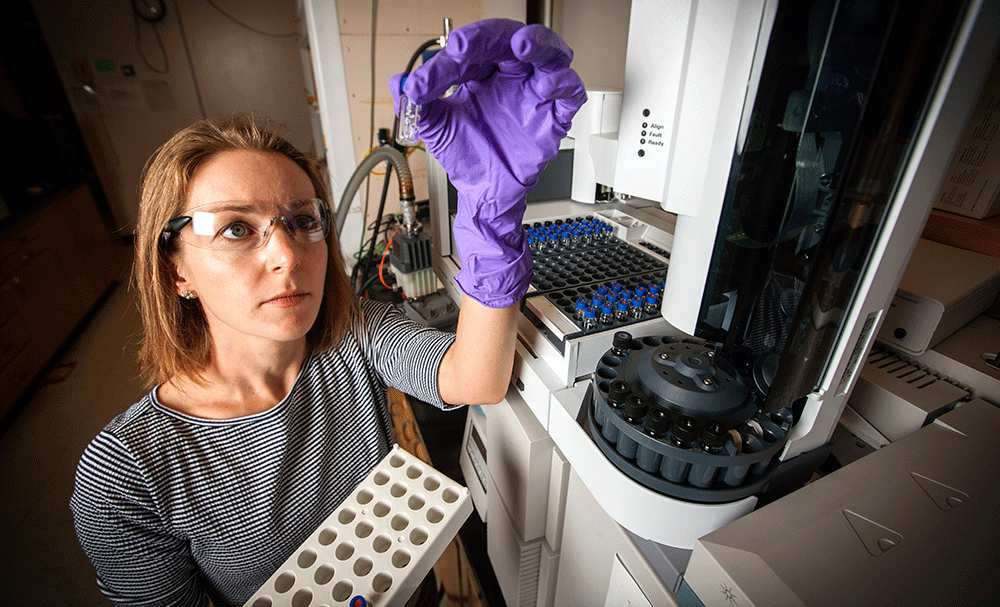
Lawrence Livermore National Laboratory researcher Sarah Baker measures the amount of methanol produced by the enzyme-embedded polymer.
Image: George Kitrinos/LLNL
A new study has emerged from Lawrence Livermore National Laboratory demonstrating that through the combination of biology and 3-D printing, scientists can turn methane into methanol.
In recent years, methanol has shown a lot of promise as a clean burning fuel. According to the U.S. Environmental Protection Agency, the alcohol’s high-performance and low emission levels could make it an ideal alternative to gasoline for cars.
On the other hand, methane is a potent greenhouse gas that is adding to the acceleration of climate change. While the chemical compound does not stay in the atmosphere as long as carbon dioxide, it is 84 times more potent due to its ability to effectively absorb the sun’s heat and warm the atmosphere. In fact, methane has outpaced carbon dioxide in climate change impact over the least 100 years, with methane’s impact being 25 times greater.
The development from Lawrence Livermore National Laboratory not only provide a clean burning fuel alternative, it effectively helps combat the pressing effects of climate change.
This from Lawrence Livermore National Laboratory:
The team removed enzymes from methanotrophs, bacteria that eat methane, and mixed them with polymers that they printed or molded into innovative reactors. The research, which could lead to more efficient conversion of methane to energy production, appears in the June 15 edition of Nature Communications.
“Up to now, most industrial bioreactors are stirred tanks, which are inefficient for gas-liquid reactions,” said Joshuah Stolaroff, an environmental scientist on the team. “The concept of printing enzymes into a robust polymer structure opens the door for new kinds of reactors with much higher throughput and lower energy use.”


